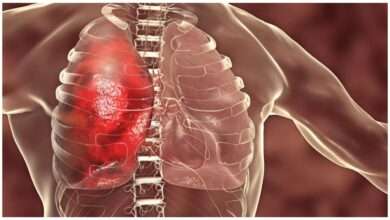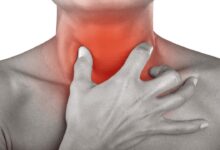
More and more frequent?
An allergy, really?
About a quarter of households believe that at least one family member has a food allergy, according to various surveys3. In reality, much less would be. This is because it is difficult to distinguish, without diagnosis, an allergy from another type of reaction to a food such as food intolerance.
Today, 5% to 6% of children have at least one food allergy. Some allergies lessen or disappear with age. It is estimated that nearly 4% of adults live with this type of allergy.
According to a report by the Centers of Disease Control and Prevention, the US government agency responsible for prevention, the prevalence of food allergies increased by 18% among those under 18 between 1997 and 2020.
The number of serious reactions would also have increased. However, as the authors of 2 studiespoint out, prevalence statistics on food allergies vary greatly from one study to another. And while there seems to be an upward trend, we can’t say for sure.
Overall, diseases of allergic origin (some cases of eczema, allergic rhinitis, asthma and urticaria) are more common today than 20 years ago.
The predisposition to allergies, called atopy in medical jargon, is said to be increasingly widespread in the West.
To what can the progression of these atopic diseases be attributed?
Food allergy: symptoms
Signs of allergies usually appear within minutes of eating the food (and up to 2 hours later).
Their nature and intensity vary from person to person. They may include any of the following symptoms, alone or in combination:
- skin symptoms: itching, rashes, redness, swelling of the lips, face and limbs;
- respiratory symptoms: wheezing, feeling of throat swelling, difficulty breathing, feeling of choking;
- digestive symptoms: abdominal cramps, diarrhea, colic, nausea and vomiting. (If these are the only symptoms detected, it is rare that the cause is a food allergy);
- cardiovascular symptoms: paleness, weak pulse, dizziness, loss of consciousness.
| RemarksFor it to be a question of an anaphylactic reaction, the symptoms must be very pronounced. Usually more than one system is affected (cutaneous, respiratory, digestive, cardiovascular).For there to be anaphylactic shock, there must be a drop in blood pressure. This can lead to loss of consciousness, arrhythmia and even death. |
Food allergy: how to diagnose it?
The doctor generally begins by learning about the patient’s personal and family history. He asks about the occurrence of symptoms, the contents of meals and snacks, etc.
Finally, he completes his diagnosis by performing one or other of the following tests, as appropriate.
Skin tests
A drop of a series of solutions each containing a small amount of allergen is applied to different places on the skin. Then, using a needle, the skin is lightly pricked where the extract is.
Blood tests
The UNICAP laboratory test makes it possible to measure in a blood sample the quantity of antibodies (“IgE” or immunoglobulins E) specific to a particular food.
Challenge test
This test requires the ingestion of a gradual amount of a food. It is practiced only in the hospital, with an allergist.
Food allergy: what evolution?
- Allergies that tend to lessen or disappear over time: allergies to cow’s milk, eggs and soy;
- allergies that tend to last a lifetime: peanut, tree nut, fish, shellfish, and sesame allergies.
Anaphylactic reaction and shock
It is estimated that 1% to 2% of the Canadian population is at risk of an anaphylactic reaction6, a severe and sudden allergic reaction. About 1 in 3 times, an anaphylactic reaction is caused by a food allergy3.
If not treated quickly, the anaphylactic reaction can progress to anaphylactic shock, i.e. drop in blood pressure, loss of consciousness and possibly death, within minutes (see symptoms below). below).
The word anaphylaxis comes from the Greek ana = opposite and phulaxis = protection, to mean that this body’s response goes against what you want.
Peanut, tree nut, fish, and shellfish allergies are most commonly implicated in anaphylactic reactions.
Vapors and odors: can they cause an anaphylactic reaction?
As a general rule, as long as there is no ingestion of the allergenic food, it is very unlikely that there will be a serious allergic reaction.
On the other hand, a person allergic to fish can present slight respiratory symptoms after having inhaled the vapors of cooking a fish, for example.
When fish are heated, their proteins become very volatile. This is why in case of fish allergy, it is not recommended to bake fish fillets and other foods at the same time, in order to avoid any contamination.
Inhaling food particles may cause an allergic reaction, but mild.
That said, most of the time, smelling the smell of a food to which one is allergic in a kitchen simply creates a reaction of disdain, without an actual allergic reaction.








